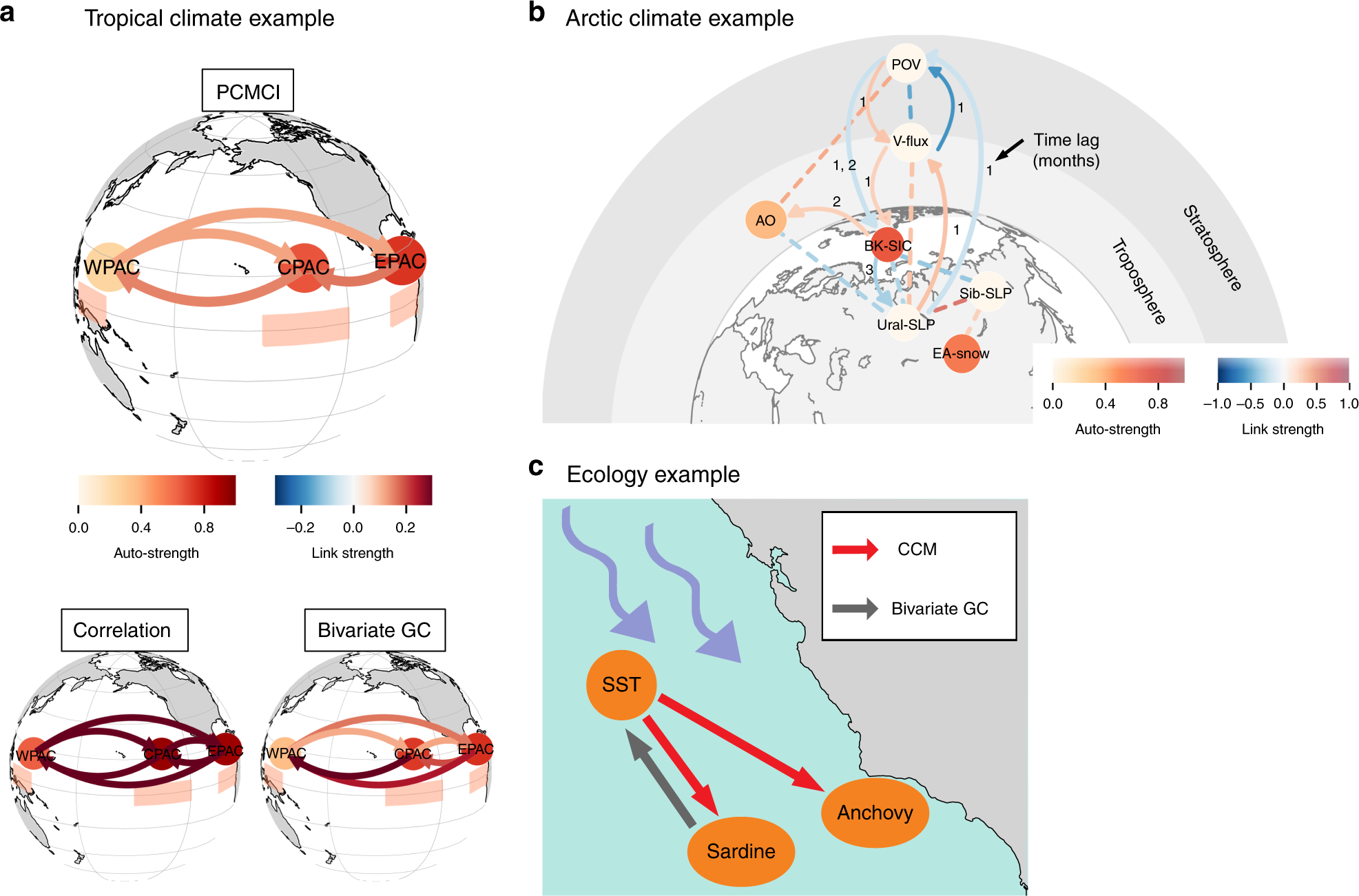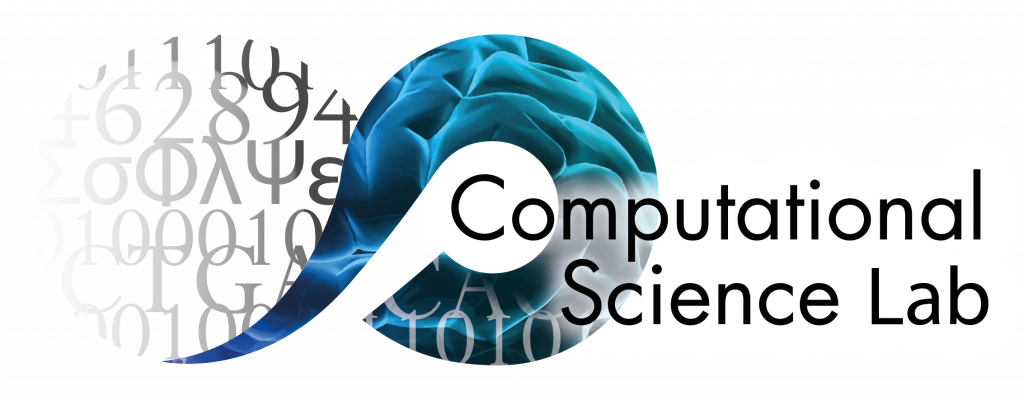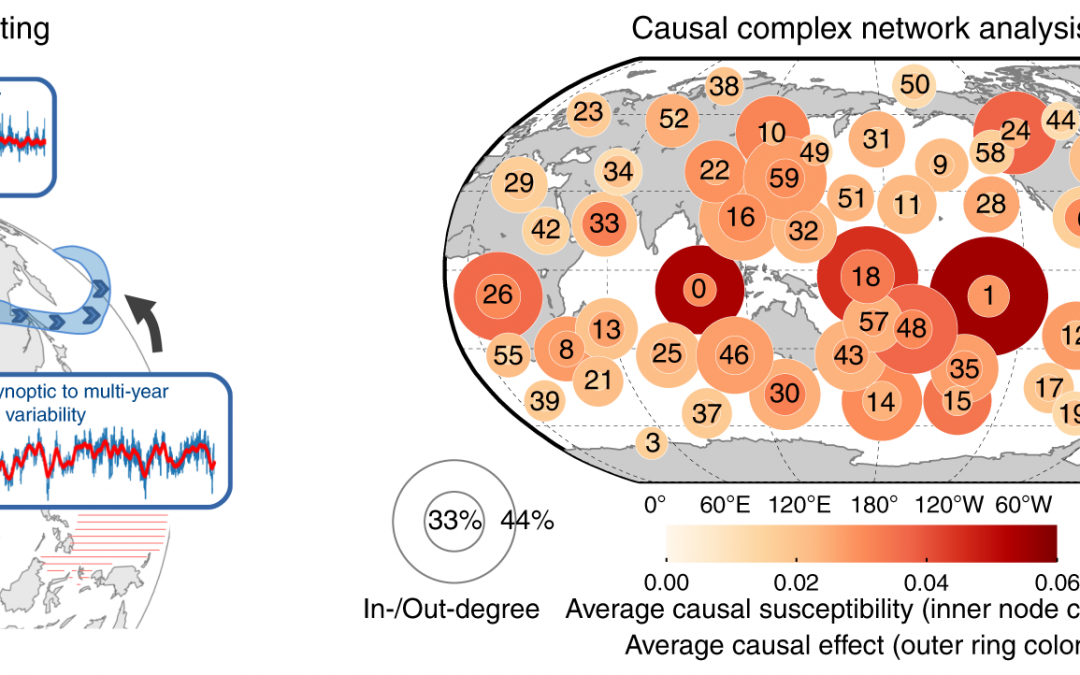Perspective article on causation and modeling in climate
A broad consortium of scientists from computational modeling, complexity science, ecology, causality inference, and various climate sciences. They came together during a workshop “Causality in Complex Systems” in June 27–30, 2017, in Soesterberg, The Netherlands, organized by Marten Scheffer. In a field riddled with competing models and hardly any option for experimental validation, the idea of the meeting was to see if the field could benefit from learning about causality inference techniques of different types, possibly applicable in different situations. The energy was so positive and the discussions so lively and interesting that a large part of the participants agreed on writing a perspective article on the subject, with the goal of improving the visibility of these techniques as well as their important considerations, in the climate sciences. This perspective article, spearheaded by Jakob Runge and Jordi Munoz, has now been published in Nature Communications. From CSL, Dr. Rick Quax was involved in the thinking and writing process as well as contributed some data sets for the accompanying CauseMe website with sample data sets and inference challenges to help the field forward.
The full article can be found at: https://www.nature.com/articles/s41467-019-10105-3

Fig. 1 from the paper. Different examples of where causality inference may be used. As an example, Fig. 1c shows an example from ecology demonstrating that traditional regression analysis is unable to identify the complex nonlinear interactions among sardines, anchovy, and sea surface temperature in the California Current ecosystem. A nonlinear causal state-space reconstruction method here extracts the underlying ecologically plausible network of interactions, revealing that sea surface temperatures are a common driver of both sardine and anchovy abundances.

